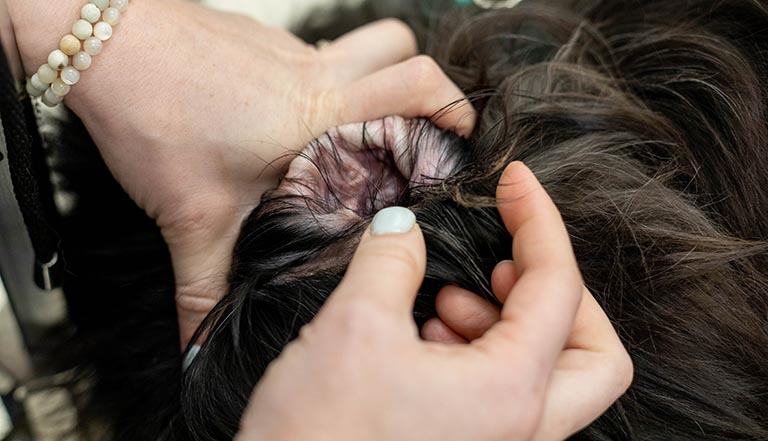Ear plucking has been a longstanding and debated practice in dog grooming. While it was once commonly believed to prevent ear infections by improving airflow and reducing wax buildup, more recent findings suggest that this procedure might not be as beneficial as once thought. For many breeds with hairier ears, like poodles, doodles and Schnauzers, ear plucking was a routine part of their grooming regimen. However, new research indicates that ear plucking can potentially cause more harm than good, leading pet parents to reconsider whether it’s truly necessary. In this blog, we’ll explore the risks and benefits of ear plucking, when it should be considered, and some safe alternatives for maintaining your dog’s ear health.
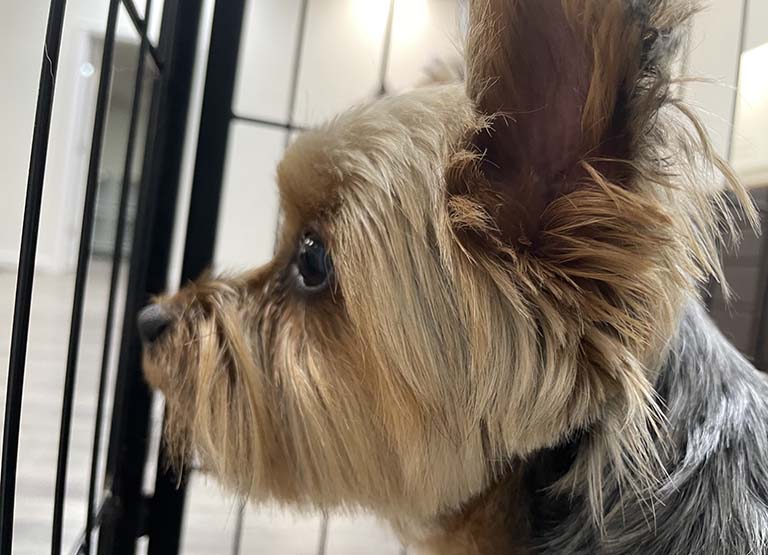
What Is Ear Plucking and Why Is It Done?
Ear plucking has long been a debated topic in the grooming world. For years, it was common practice for groomers and veterinarians to remove hair from a dog’s ear canal, believing that the hair blocked airflow and contributed to wax and moisture buildup. The idea was that removing the hair would improve air circulation and help prevent ear infections. The process involves using tweezers, hair removal tool or fingers to extract the hair. This practice was most commonly applied to breeds like poodles, doodles, spaniels, Schnauzers and other dogs with hairier ears.
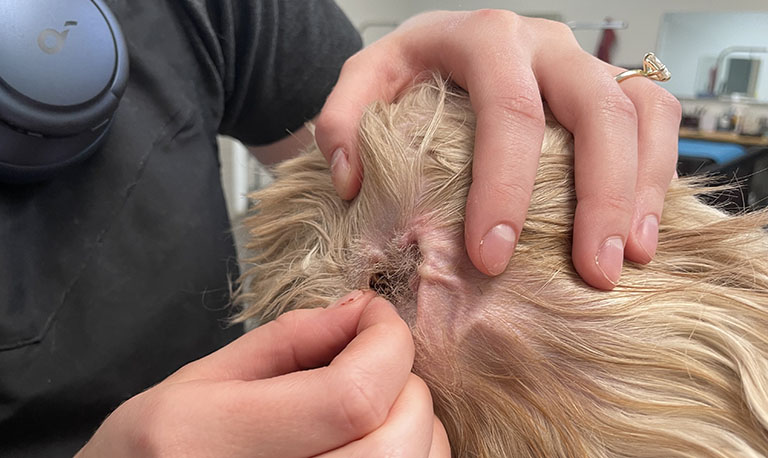
The Risks of Ear Plucking
Newer findings suggest that ear plucking can cause more harm than good. While it was once believed to be a preventative measure, experts now recognize that the procedure may actually increase the risk of infection. Plucking hair from the ear canal can cause microscopic tears in the delicate tissues, leaving the ear vulnerable to bacteria. Instead of preventing ear infections, this can often create an environment where infections are more likely to occur. Additionally, repeated plucking may lead to pathological conditions, where abnormal changes in the anatomy or function of the ear arise from the trauma.
Beyond the physical risks, ear plucking can also cause pain and discomfort, particularly in sensitive dogs. The irritation from micro-tears can make the dog’s ears feel sore, leading to further complications if the area becomes dirty or inflamed. Over time, the dog may also experience emotional stress, associating grooming sessions with pain and discomfort. This stress can make future grooming appointments more challenging and traumatic for both the dog and the groomer.
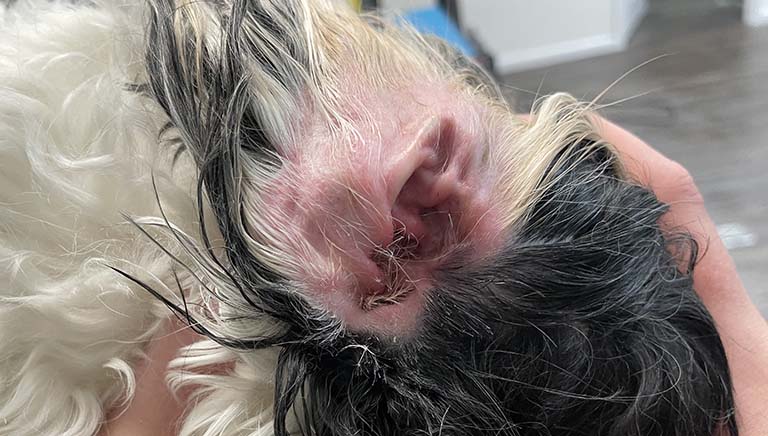
When Should Ear Plucking Be Considered Necessary?
Ear plucking should only be considered when absolutely necessary, such as in cases of excessive hair growth or a significant buildup of earwax. In otherwise healthy ears with no visible signs of infection or discomfort, it’s best to leave the hair alone. Healthy ears that are functioning normally should be allowed to maintain their natural balance without interference.
If you notice visible signs of blockage, like ear hair obstructing airflow or an excessive buildup of wax, plucking may be required. However, it’s essential to consult with a vet before taking action. A vet can assess your dog’s ear health and advise if plucking is the best course of action or if other treatments would be more appropriate. This ensures that any procedures are done safely.
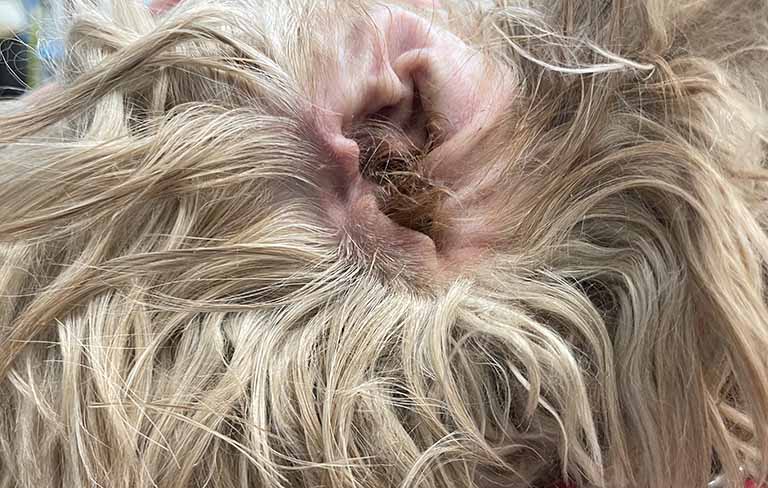
Alternatives to Ear Plucking
Ear Cleaning
There are alternative ways to maintain ear health without resorting to this controversial practice. One of the most important steps is regular ear cleaning. Gently cleaning your dog’s ears can help prevent wax and debris buildup without the need to remove hair from the ear canal. Regular cleaning is a simple and non-invasive way to keep your dog’s ears free from dirt and moisture, which can contribute to infections if left unchecked. We recommend having a professional groomer or veterinarian handle ear cleaning, as it can be easy to unintentionally cause harm without proper training. All of our grooming packages at Smoochie Pooch include professional ear cleaning.
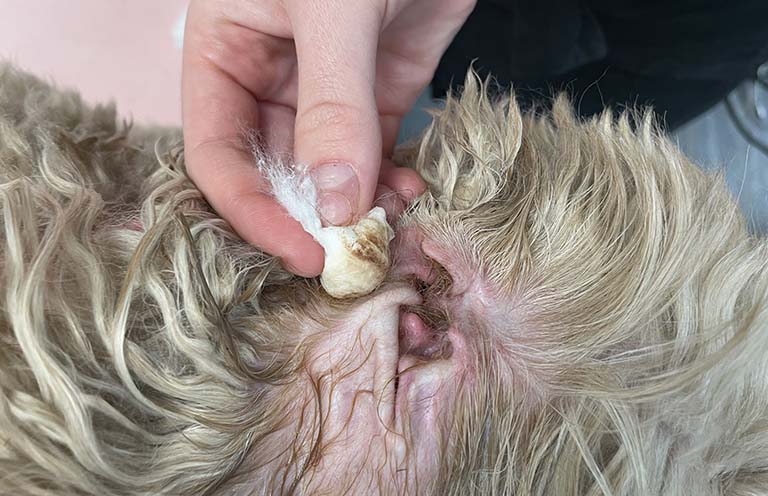
Trimming Ear Hair
Another option is trimming the hair around the ear rather than inside the canal. This method can reduce blockages and promote airflow without the risks associated with plucking. By keeping the ear area tidy and free from excessive hair, you can minimize the chances of moisture getting trapped, which is a common cause of ear problems.
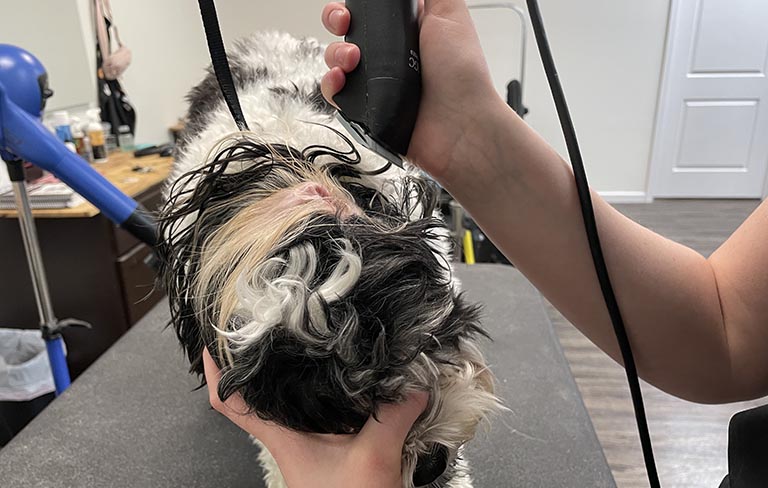
Monitor Dog’s Ear Health
It’s also essential to monitor your dog’s ear health closely. Watch for signs of irritation, excess wax buildup, or infection, such as redness, swelling, foul odors, or your dog excessively scratching their ears. If you notice any of these signs, consult your vet before deciding on any treatment or grooming routine. This proactive approach helps you address potential problems early while avoiding unnecessary procedures like ear plucking.
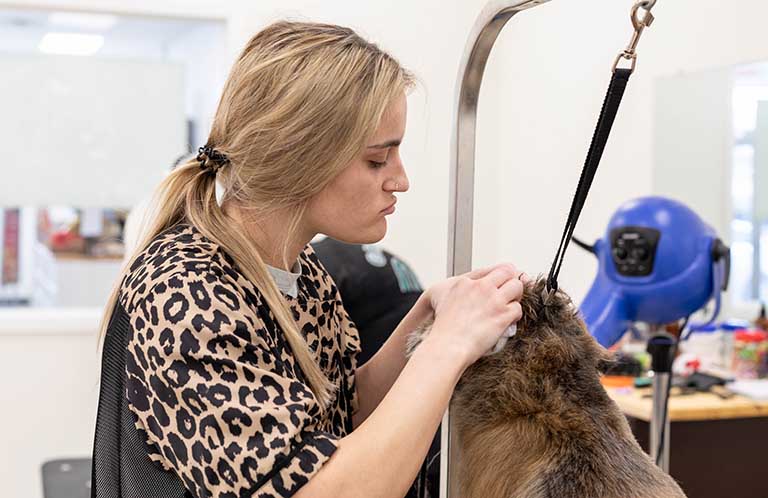
Final Thoughts on Ear Plucking
While ear plucking was once a common preventive measure, newer research highlights the potential risks involved, from increased infection risk to discomfort and emotional stress for your dog. Instead of routine plucking, pet parents should focus on alternatives such as regular ear cleaning, trimming the hair around the ear and closely monitoring their dog’s ear health. If ear plucking seems necessary, it’s always best to consult with a veterinarian to determine the most appropriate course of action. By taking a balanced, careful approach to ear care, you can keep your dog’s ears healthy and prevent unnecessary discomfort.


